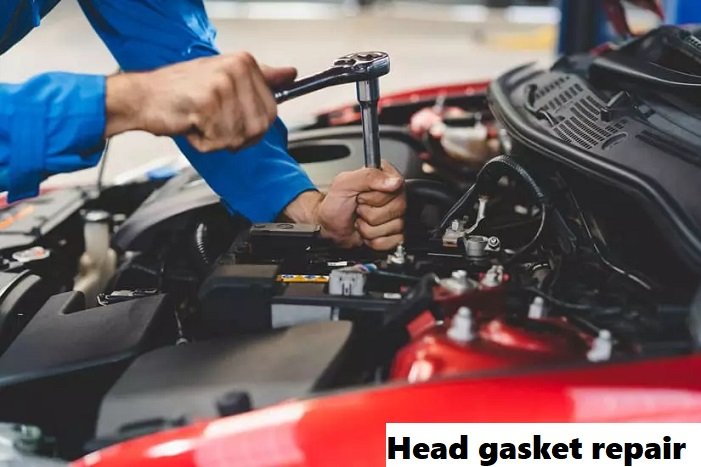Head Gasket Repair Cost: Everything You Need to Know Before You Break the Bank

If you’re here, chances are you’ve just heard those dreaded words: “Your head gasket is blown.” Believe me, I’ve been in your shoes, and I know how overwhelming this news can be.
Head gasket repairs are notorious for being one of the most expensive car repairs. But before you panic, let me break down everything you need to know about head gasket repair costs and why they can be so steep.
What Exactly Is a Head Gasket, and Why Does It Matter?
The head gasket is one of the most critical components of your engine. It sits between the engine block and the cylinder head, sealing the combustion chamber.
In simpler terms, it keeps everything running smoothly by preventing coolant, oil, and combustion gases from mixing. When the gasket blows, all sorts of issues arise, from overheating to potential engine damage.
How Much Does It Really Cost to Repair a Blown Head Gasket?
Here’s the big question, and trust me, I felt the same sticker shock when I got my first estimate. On average, head gasket repairs can range from $1,000 to $3,000. The wide range depends on several factors:
- Vehicle Make and Model: Luxury cars or vehicles with complex engines will typically cost more to repair. In some cases, the labor for these cars can be incredibly time-consuming.
- Labor Costs: The bulk of the expense is due to labor. Repairing a head gasket is no quick fix—it often takes 10-20 hours of labor.
- Extent of Damage: Sometimes, when a head gasket blows, it doesn’t stop there. If your engine has suffered other damage, like a warped cylinder head, those repairs will add to the cost.
Why Is Head Gasket Repair So Expensive?
When I first saw the quote, my first thought was, “Why is this so expensive for just a gasket?” The truth is, the gasket itself isn’t the pricey part—it’s everything else that comes with it. Here’s a quick breakdown:
- The Gasket Itself: This part generally costs between $100 to $200. But that’s the least of your worries.
- Labor: Mechanics have to disassemble a large part of your engine to get to the gasket, which is why labor costs can run up to $1,500 or more depending on your location and vehicle.
- Additional Parts: If other parts were damaged as a result of the blown gasket, those will need to be replaced as well. That’s where costs can add up fast.
Can You Keep Driving with a Blown Head Gasket?
This was my first question when my car started acting up—”Can I just drive it until I’m ready to fix it?” The short answer? Absolutely not. Driving with a blown head gasket can cause overheating, engine misfires, and even complete engine failure.
In my case, I learned the hard way that trying to stretch it only worsened the damage. The longer you wait, the more expensive the repair is going to be.
Should You Repair the Head Gasket or Replace the Car?
This is the decision that had me stuck for a while. Is it worth pouring thousands into fixing the head gasket, or should you consider getting a new car? Here’s what helped me decide:
- Car’s Age: If your car is fairly new or in otherwise great condition, repairing the gasket might be worth it. In my case, my car was relatively new, and I knew it had more life left in it, so I went for the repair.
- Overall Condition: If your car is older or already giving you problems, a head gasket repair might not be worth the cost. Replacing the car could be the smarter choice.
- Cost vs. Value: If the repair costs are close to what your car is worth, you might want to think twice before going through with it.
DIY Head Gasket Repair: Is It Possible?
You might be wondering if you can cut costs and fix it yourself. Let me stop you right there—unless you’re an experienced mechanic, do not attempt this repair yourself.
I’m all for saving money, but head gasket repairs are complicated and can easily go wrong. One small mistake could cause even more damage, which will end up costing you more in the long run.
How to Avoid a Blown Head Gasket in the Future
After going through the process of repairing a head gasket, I’ve picked up a few tips that can help you avoid this costly repair down the road:
- Regular Maintenance: Keeping up with routine maintenance like oil changes and coolant flushes is key to preventing gasket issues.
- Monitor Coolant Levels: Low coolant levels can cause your engine to overheat, which is a common cause of blown gaskets. Make sure to check your levels regularly.
- Watch for Warning Signs: If your car starts overheating or acting up, don’t ignore it. Pull over and get it checked out before the problem escalates.
Conclusion
Facing a head gasket repair is no small thing—it’s expensive, time-consuming, and stressful. But if your car is otherwise in good shape, getting the repair done can be worth it, as it’ll keep your engine running smoothly for years to come. However, if your vehicle is older or the repair costs are sky-high, replacing the car might be the better option.
In my case, going ahead with the repair saved my car from more serious damage, and I’m glad I made the investment. But every situation is different, so weigh your options carefully and get multiple quotes before making your decision.





